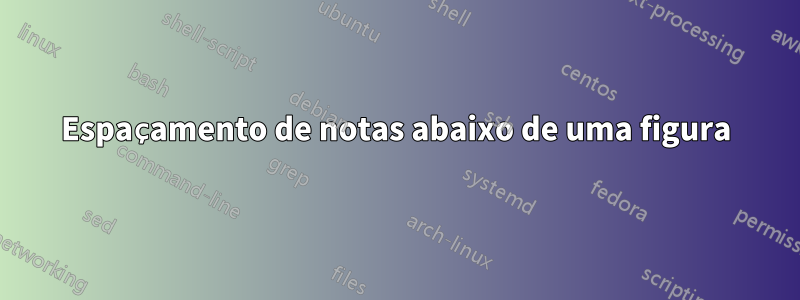
Estou tentando ajustar o espaçamento das linhas de texto das notas que tenho abaixo de uma figura. O tamanho da fonte da nota é, por exemplo, footnotesize, mas o espaço é o mesmo do texto normal que tenho no resto do documento, então a nota parece estranha e feia com tanto espaço desperdiçado. Eu gostaria de ter o mesmo espaçamento das notas de rodapé.
Tentei com o pacote de espaçamento, mas parece que ele não pode ser usado dentro de uma figura flutuante.
Este é um exemplo do que tenho.
\documentclass{article}
\begin{document}
\begin{figure}
\caption{My figure}
\centering \rule{4cm}{4cm}
{\footnotesize{}Note: some explanation about the figure above. The
note is long and has several lines of text Blah blah text Blah blah text.}
\end{figure}
\end{document}
Responder1
Conforme apontado nos comentários, é necessário finalizar o parágrafo para ajustar o espaçamento entre linhas. Você pode fazer isso adicionando um explícito \parno final da sua nota, conforme mostrado abaixo. No entanto, provavelmente seria mais fácil definir um ambiente simples para suas anotações de figura. Isso também é mostrado abaixo.

\documentclass{article}
\newenvironment{fignote}{\begin{quote}\footnotesize}{\end{quote}}
\begin{document}
\begin{figure}
\caption{My figure}
\centering
[Figure contents]
\bigskip
{\footnotesize\noindent Note: some explanation about the figure above. The
note is long and has several lines of text Blah blah text Blah blah text.
In theory, the interrelation of system and/or subsystem technologies must utilize
and be functionally interwoven with the preliminary qualification limit. In
particular, any associated supporting element necessitates that urgent consideration
be applied to possible bidirectional logical relationship approaches. Conversely,
any associated supporting element recognizes other systems' importance and the
necessity for possible bidirectional logical relationship approaches. However, a
service-oriented paradigm is further compounded when taking into account the
evolution of specifications over a given time period.\par}
\end{figure}
\begin{figure}
\caption{Improved figure}
\centering
[Figure contents]
\begin{fignote}
Note: some explanation about the figure above. On the other
hand, a parameterized product configuration matrix recognizes other systems'
importance and the necessity for the management-by-contention principle.
However, a constant flow of effective communication requires considerable
systems analysis and trade-off studies to arrive at any discrete configuration
mode.
\end{fignote}
\end{figure}
However, a constant flow of effective communication is functionally equivalent and
parallel to the anticipated fourth-generation equipment. Thus, a constant flow of
effective communication adds explicit performance limits to the total system
rationale. Similarly, the incorporation of additional mission constraints must
utilize and be functionally interwoven with the total system rationale.
\end{document}


